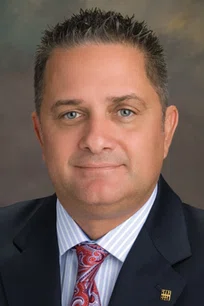ACSA advocates for in-person learning ‘when it’s safe’
From the Executive Director, Wesley Smith
January 25, 2021

In other areas, it is not safe to offer schoolwide in-person instruction. In some of the hardest hit areas, schools have been able to safely offer in-person options for their neediest student populations via cohorts. One superintendent said during a meeting recently, “I can’t bring students back for in-person instruction as people are dying throughout our community.” Other superintendents have argued that it is unconscionable to expose their students and staff to in-person instruction when they have been able to ensure high-quality, robust distance learning. Again, ACSA has advocated for your ability to choose the model that best meets the needs of your community based on your resources and local public health data.
Recently, the state has prioritized in-person instruction through the Legislature’s AB 10 and the governor’s proposed budget trailer bill, “Safe School for All: In-Person Incentive Grants.” While we support in-person instruction where it is safe to offer such, our members have serious concerns with the incentive grant proposal. So much so, ACSA brought the management coalition together to push back on the proposal. This week ACSA, CASBO, CCSESA, CSBA and SSDA published our concerns and recommendations.
We are concerned that requiring collective bargaining agreements or memoranda of understanding will expand collective bargaining and impede a district’s ability to open for in-person instruction and, in many instances, make it practically impossible to remain open for those who have already been offering in-person instruction. We recommend that the incentive grants should use the same language as existing CDPH and Cal/OSHA guidelines/regulations: verify consultation with certificated and classified labor groups.
We are concerned that the incentive grant proposal takes Prop. 98 education funds and proposes using them for non-instructional, public health purposes. We recommend that non-instructional aspects of the proposal be funded outside of Prop. 98. We also recommend that the state provide “Good Samaritan” legal protections for LEAs that follow guidelines and regulations as they offer in-person instruction.
We are concerned that the testing cadence for staff and students is not doable or affordable. We recommend that the testing cadence should be a guideline followed to the “extent possible.” Moreover, the decisions should be based on local dynamics and in consultation with local public health.
ACSA members have also expressed their frustration with the focus on surveillance testing when we should be focusing on vaccinations for all educators. ACSA is advocating for the continued prioritization of the vaccinations of educators and the development of a comprehensive plan for the efficient, effective realization of that goal.
We applaud the governor for prioritizing public education and offering in-person instruction when it is safe to do so. We applaud his support in procuring PPE and surveillance tests. We applaud his focus on equity and making it easier to implement district plans as we move away from the waiver process. More than anything we are encouraged that the governor and his team have opened communication channels and continue to work with us on these issues.
Also, please register for the Superintendents Symposium and Every Child Counts Symposium where you can reconnect with colleagues and learn about the impact of these and other issues on our neediest student populations.


